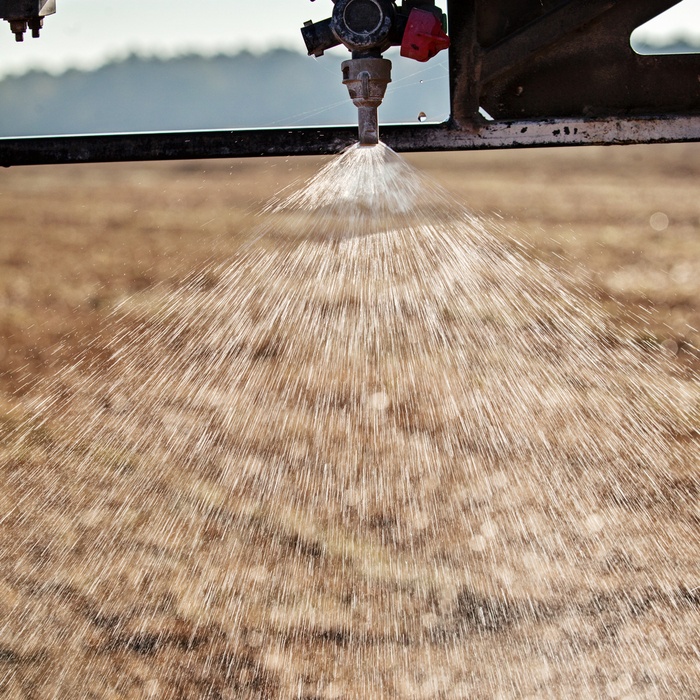The temptation to cut costs is growing as the ag economy continues to put pressure on growers. It’s a balancing act between saving money now and harvesting a profitable crop later. If you’re thinking about cutting back on your herbicide program this season, Helena experts urge caution in order to maintain adequate control.

“What you have to consider is that the most expensive weed management program is the one that doesn’t work,” says Helena Product Specialist Brad Hammes.
Using the wrong products in an effort to save money can have unintended consequences such as retreatments, added fuel costs, and more time spent in the field. For Hammes, it’s about doing things right the first time. He advises growers to stop problems before they start by layering residual herbicides and enhancing performance with a quality adjuvant. He recommends Grounded® to hold residual herbicides in the weed germination zone longer. Grounded is a soil and spray deposition agent known for its ability to enhance early-season results and significantly improve most any tank mix.
Unfortunately, there’s no one-size-fits-all herbicide. Helena Agronomist Matt Boyer advises growers to choose herbicides with multiple, effective modes and sites of action designed to combat the weeds in their fields. A mode of action is best described as the overall process the herbicide affects. Conversely, a site of action is the specific location or biological pathway in which a herbicide inhibits plant growth. Understanding the differences between the two is important for resistance management. As resistant weeds like Palmer Amaranth continue their spread, growers have fewer effective sites of action to choose from. Utilizing multiple, effective modes and sites of action helps preserve these chemistries and provides a better chance of success today. Like Hammes, Boyer believes in starting clean and making residual herbicides the backbone of any herbicide program. He also warns against relying too much on post applications.
“We just can't get behind,” says Boyer. “We need to control weeds before they ever emerge. That's our best chance of success. And if they do pop up, we need to be going after them when they're really small, preferably less than an inch tall.”
Boyer also wants growers to remember the “free” things they can do to control weeds like using narrow row spacing in soybeans. He says it’s not a solution for everyone due to disease pressure, but in certain areas, narrow row soybeans can be utilized to minimize weed pressure. Narrow rows allow the crop to canopy sooner, shading out weeds sooner, which results in fewer and smaller weeds. When budgets are tight, growers might also consider cutting rates, but Boyer advises against this method.
“Cutting rates is never going to extend our control,” says Boyer. “It costs us the same to spray three ounces of a product, or if it's six ounces we're spraying through that machine.”
Another way to get the best control out of your products is to use a water conditioner. As Hammes explains, herbicides can get tied up, antagonized and deactivated by a variety of factors in your water. Using a good water conditioner can bring your water as close to laboratory quality water as possible.
“We know what those herbicides are supposed to do when they’re in good water,” says Hammes. “If we understand what your water looks like, it gives us a lot of information on how we need to better manage it.”
Hammes prefers multifunctional products offering more benefits than a standard AMS. This includes sequestering agents and pH buffering products for longer lasting results. New to the market this year is Cohort®. Ideal for use with glufosinate and other herbicides requiring AMS, Cohort is a low-rate, liquid adjuvant designed to produce faster, more complete weed control, while ensuring consistent and effective applications. In addition to meeting AMS label requirements for water conditioning, Cohort lowers pH, slows drying time and enhances pesticide efficacy.
Ultimately, the best weed control program for budget-conscious growers is all about planning. Working with an agronomist or trusted sales representative makes weighing these factors easier. They can help you build a plan that takes your weed control needs into account, while keeping an eye on expenses and yield goals. A final piece of advice from our experts it to stick to the plan. Even when conditions are less than ideal, a little weed control is better than nothing, because as Boyer says, “weeds cost us money.”
Find your Helena location for help with your weed management program this season. To hear more advice from Brad Hammes and Matt Boyer, check out episode 82 of the FieldLink Podcast below.


